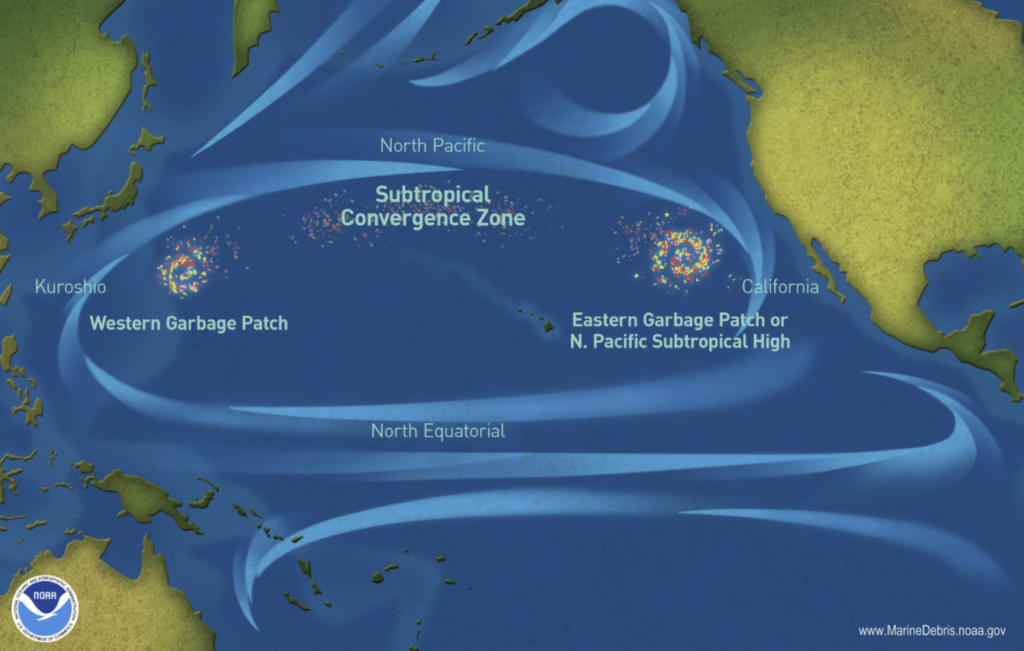The Great Pacific garbage patch is only great in size, not in substance. The GPGP is in the Pacific Ocean, with one swirling mass between Hawaii and California and the other south of Japan.

What and Where Are Garbage Patches?
Garbage patches are large areas of the ocean where litter, fishing gear, and other debris – known as marine debris – collects. They are formed by rotating ocean currents called “gyres.” You can think of them as big whirlpools that pull objects in. The gyres pull debris into one location, often the gyre’s center, forming “patches.”
There are five gyres in the ocean. One in the Indian Ocean, two in the Atlantic Ocean, and two in the Pacific Ocean. Garbage patches of varying sizes are located in each gyre.
The most famous of these patches is often called the “Great Pacific Garbage Patch.” It is located in the North Pacific Gyre (between Hawaii and California). “Patch” is a misleading nickname, causing many to believe that these are islands of trash. Instead, the debris is spread across the surface of the water and from the surface all the way to the ocean floor. The debris ranges in size, from large abandoned fishing nets to tiny microplastics, which are plastic pieces smaller than 5 mm in size. This makes it possible to sail through some areas of the GPGP and see very little to no debris.
The Impact of Garbage Patches on the Environment.
Garbage patches, especially the Great Pacific Garbage Patch, are far out in the middle of the ocean where people hardly ever go. Because they are so remote, it can be hard to study them. Scientists rarely get to see the impacts of garbage patches on animals first hand. So far, we know that marine debris found in garbage patches can impact wildlife in a number of ways:
- Entanglement and ghost fishing: Marine life can be caught and injured, or potentially killed in certain types of debris. Lost fishing nets are especially dangerous. In fact they are often called “ghost” nets because they continue to fish even though they are no longer under the control of a fisher. Ghost nets can trap or wrap around animals, entangling them. Plastic debris with loops can also get hooked on wildlife – think packing straps, six-pack rings, handles of plastic bags, etc.
- Ingestion: Animals may mistakenly eat plastic and other debris. We know that this can be harmful to the health of fish, seabirds, and other marine animals. These items can take up room in their stomachs, making the animals feel full and stopping them from eating real food.
- Non-native species: Marine debris can transport species from one place to another. Algae, barnacles, crabs, or other species can attach themselves to debris and be transported across the ocean. If the species is invasive, and can settle and establish in a new environment, it can outcompete or overcrowd native species, disrupting the ecosystem.
To read more, check out NOAA’s Marine Debris GPGP page or the National Marine Sanctuary Foundation page on the GPGP.